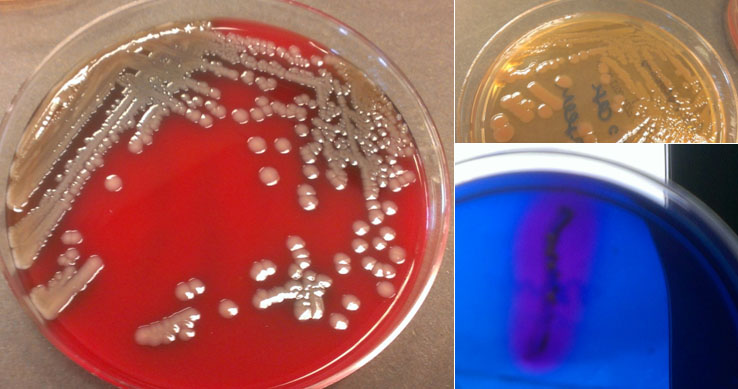
![]() Contributed by Waseem Anani, MD and Rahman Hariri, MD
Contributed by Waseem Anani, MD and Rahman Hariri, MD
PATIENT HISTORY
An otherwise healthy 55-year-old male presents to the emergency department following a firecracker exploding in his right hand. He was found to have a large open fracture and a laceration extending to the wrist with exposed bone and partial amputation of the thumb. Later, he developed pulsatile bleeding of the radial artery controlled with direct pressure. He was urgently taken to the OR for debridement and reconstruction. Skin, subcutaneous tissue, muscle, and tendon specimens were sent to the microbiology department for culture.
A Gram stain showed occasional polymorphonuclear neutrophils (PMNs) and a preliminary review of the cultures revealed rare Aeromonas, rare Pseudomonas species, and rare Bacillus species in the first 24 hours. During this time, the patient's hand continued show erethyma and purulent discharge. As a result, he to the OR for further debridement with collection of three sets of cultures from the deep hand, forearm, and dorsal wound. Gram stains and cultures of the second set of tissues revealed (Table 1):

After further questioning, the patient was found to have fallen into muddy water near a pond following the trauma. Later, the patient returned to the OR for amputation of his right hand after continuing purulent discharge despite broad spectrum antibiotic coverage. Two final cultures were sent of the right arm status post surgery with no organism seen.
IDENTIFICATION:
The blood agar (left), MacConkey agar (top right), and DNase with toluidine blue cultures are as follows:

Initial characterization of the organism was performed with the following results below. Figure 1A consists of the top row of reagents, while Figure 1B represents the lower set of reagents.

+ = positive result, - = negative result, +/- = equivocal result
The unknown colony was suspending and put into the Vitek 2 for identification with the following results:
